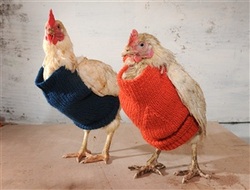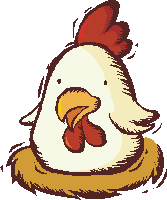
new name is www.FreeHenHousePlans.net On Pinterest
http://bit.ly/1a1zkmN
|
 Ok, we're excited too, but you don't have to get dressed up! Our
new name is www.FreeHenHousePlans.net On Pinterest http://bit.ly/1a1zkmN
0 Comments
 There is research online showing that there is a great improvement in egg quality and healthiness when chickens can Free Range on Pasture. Learn more at the link below. #Backyardhttp://www.motherearthnews.com/eggs.aspx#ixzz1HSF62nZt
 Experts feel that Hens prefer comfortable Nesting Boxes, so put plenty of material in each box. You can use Straw or Shredded Paper, but most people prefer Wood Shavings made from a softwood such as Pine. These are commonly used in horse stalls so they are generally easy to purchase and economical. Change the bedding as needed and keep the boxes clean!
#PetC  No, they have no sweat glands so they pant to cool down. It is critical in hot weather that Chickens have plenty of cool, clean water. Feed them in the cooler parts of the day. Keep the air well ventilated and moving with a safe fan if possible. Lastly, avoid overcrowding and provide shade when they are outside. #BackyardChicken
Finally, think about the overall appearance of what you want your hen house to look like. There are several ways that you can build the chicken coop which will impact the overall design. This will also likely influence the cost of the building process, so it’s something to think about and work within a budget that you can live with. There are cheaper methods to build your hen house,so understanding the elements that will influence the cost is the first step to making a good choice. Be sure you’re factoring these items in as you decide which type of chicken house that you wish to build. Obtaining the information before you start to build will help save you hundreds of dollars on the project. In an upcoming post, you'll learn ways to keep your costs down when you choose your materials.
The next question you should ask is whether you want your chicken coop to be able to roll or if you preferred one that’s fixed in place. Portable chicken coops give you the advantage of being able to roll it around in your yard, If you are someone who likes to keep your chickens as family pets, this makes for a very great idea. Many people refer to this style hen house as a Chicken Tractor. By moving your portable hen house along, you distribute the poultry manure around your property which make for great fertilizer! Also, having a mobile hen house or coop allows for easier maintenance since you can simply move the chicken coop to a spot that is convenient to clean it. A clean poultry house is a happy poultry house! On the other hand, if you’re want something with more structural integrity, than you’ll likely be better off choosing a fixed hen house. Non-movable hen houses are built sturdier, so that they are able to withstand the wear and tear from your backyard flock! For a great Chicken Tractor plan, please click below!
|